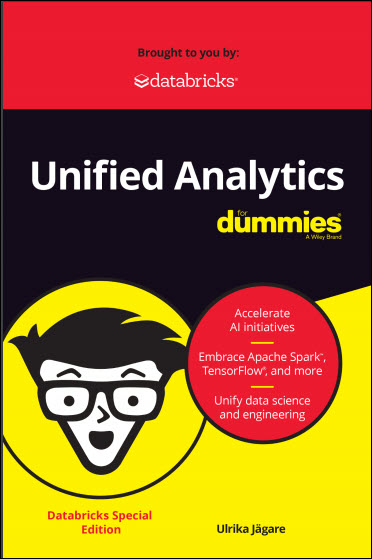So, rewind 10 or so years, and you may have only needed a simply relational database, point-in-time data, and some internal spreadsheet expertise to drive business decisions. Now, the tides have turned.

Download the full report.
Today’s businesses and enterprises are increasingly focused on big data that can help drive innovation and transformation through the potential of artificial intelligence.
In fact, according to a survey and research report commissioned with IDG’s CIO, nearly 90 percent of enterprises are investing in data and AI technology. In other words, data is “at the core” of how modern enterprises are using AI. That’s according to a new report from Databricks, “Unified Analytics for Dummies,” that walks through the basics of unified analytics to accelerate AI initiatives, and connecting data science and engineering.
Databricks works to accelerate innovation for its customers by unifying data science, engineering and business. Databricks’ founders started the Spark research project at UC Berkeley that later became what we know as Apache Spark. The company is also the purveyor of the Databricks Unified Analytics Platform.
Now, the question Databricks is addressing is how can modern enterprises unlock the potential of AI to change their business?
The new report from Databricks covers how to avoid and overcome the most common challenges impacting AI success. How? Through what Databricks explains as unified analytics, “a concept that brings together solutions that unify data science and data engineering, making AI much more achievable for enterprise organizations and enabling them to accelerate their AI initiatives.”
Despite the allure of artificial intelligence, most enterprises are struggling to succeed with AI.
The new e-book takes a good, long look at how to move enterprise AI initiatives forward.
The report starts of with a chapter that outlines the major challenges enterprises face when investing in AI. Of course, the term AI is enticing for modern enterprises. But there are serious challenges to succeeding in AI. To start, one challenge is that data science and data engineering are siloed in different systems and different organizations. It would certainly be easier if enterprise data was all in one place, but instead it’s often siloed across multiple systems, warehouses, and more.
In light of this concern, the next three chapters of the report explain how to tackle or avoid these challenges through the concept of Unified Analytics, and they also give examples on how they have been addressed in different companies using a Unified Analytics approach.
Focused on understanding unified analytics, the report offers insight on overcoming the inefficiencies of scattered IT environments. According to the report, these are systems “where data is spread out over multiple systems and architectures,” and they often are not prepared for artificial intelligence.
The report also covers how Apache Spark is being used as a powerful unified analytics engine, considering Databricks origins. Databricks also provides practical examples on how unification of data science and data engineering helps solve these problems and accelerate innovation.
The last and final chapter od the report offers information on what’s available as a resource as well as some useful tips on how to get started with unified analytics and AI. End the report with ten ways a unified analytics platform can help your business.
Download the new report, “Unified Analytics for Dummies,” that explores the steps to AI success in today’s market.





Speak Your Mind